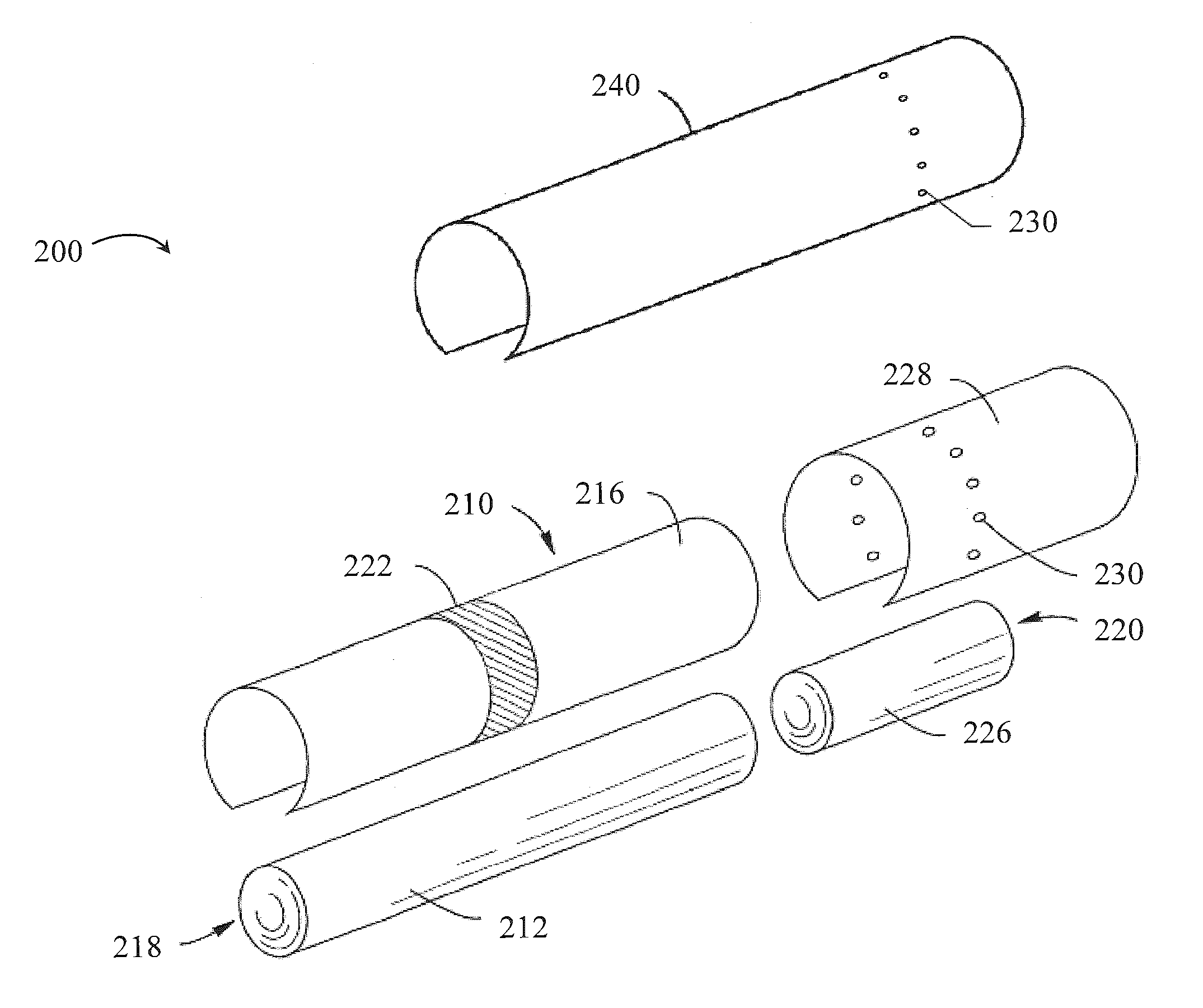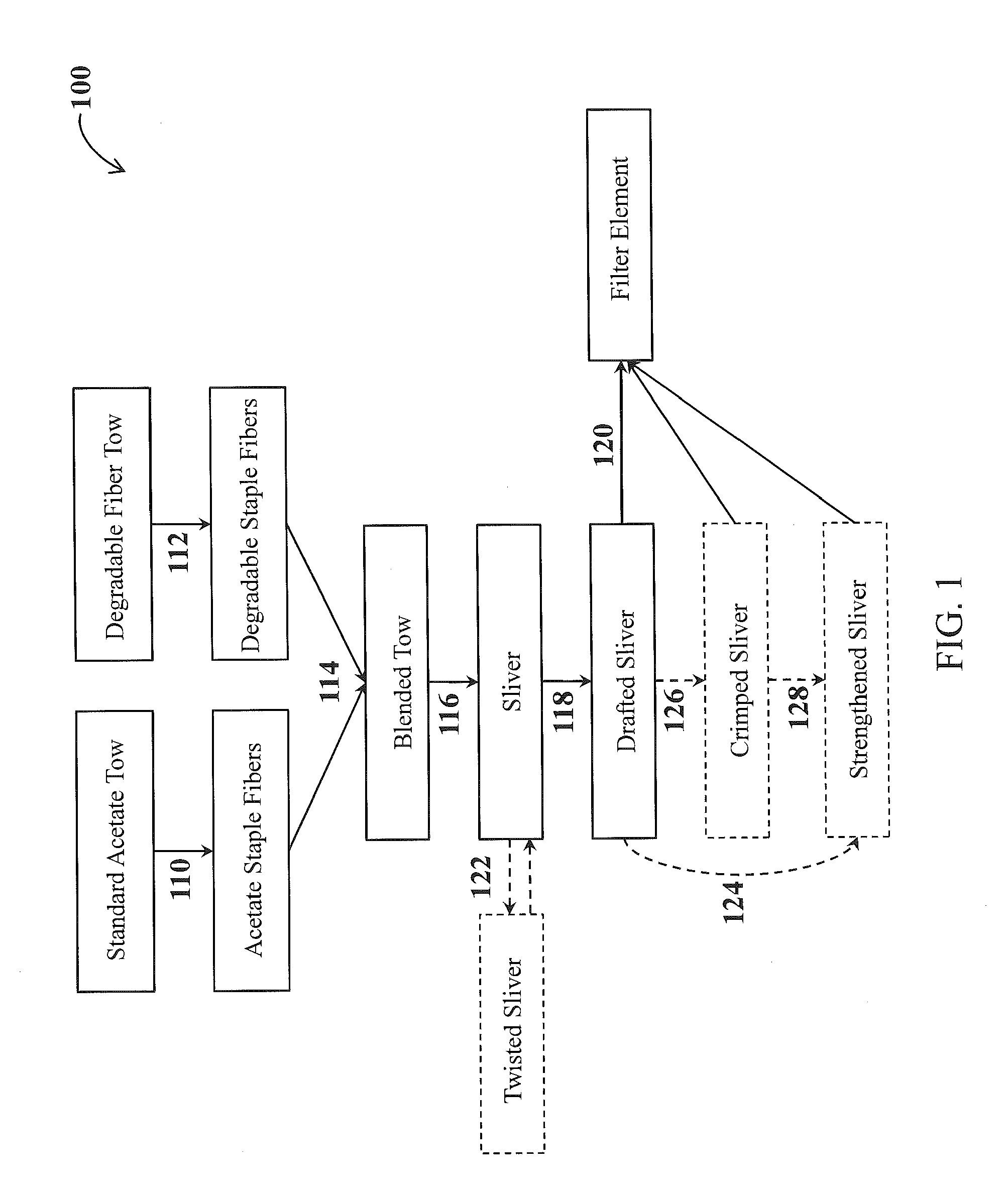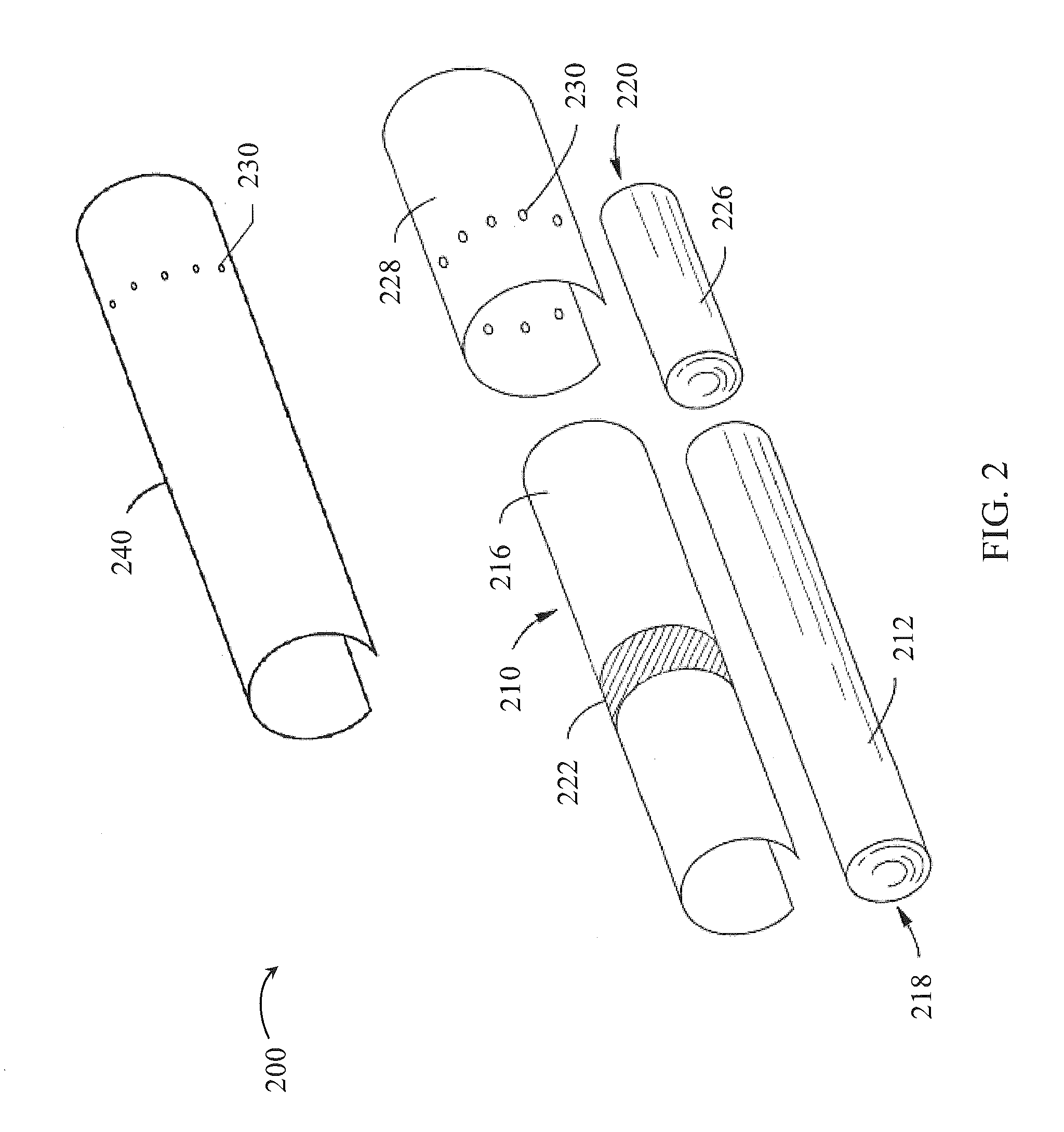Mixed fiber sliver for use in the manufacture of cigarette filter elements
- Summary
- Abstract
- Description
- Claims
- Application Information
AI Technical Summary
Benefits of technology
Problems solved by technology
Method used
Image
Examples
example 1
Sliver Preparation
[0072]a) Cutting
[0073]Acetate tow (40,000 denier, 3.0 dpf, supplied by Eastman Chemical Company) and rayon tow (1.5 million denier, 3.0 dpf, supplied by Lenzing) are separately cut into 7 inch staple fibers. The staple fibers are combined in a 1:1 ratio by hand blending.
[0074]b) Blending / Carding
[0075]The blended staple fibers are fed in 1 lb increments to a mini card feed apron and processed through a roller top card (Carolina Specialty TTC Mini Card). The resulting sliver is a 90-100 grain per yard sliver having a denier of about 57,000-64,000 denier.
[0076]The sliver at this point has a breaking strength of about 1 pound at maximum load. It is noted that this data is based on an unoptimized sliver. As described in the present application, there are numerous ways of increasing the strength, such as by twisting the sliver or by inserting a fiber along the length of the sliver. Further, the carding method can be optimized in certain embodiments to provide a sliver ha...
example 2
Sheath-Core Production
[0079]As described above, one means for strengthening a sliver according to the invention is to insert another type of material so as to produce a product having a sheath-core type structure.
[0080]a) Insertion of Cellulose Acetate Yarn
[0081]A 10,000 denier textured cellulose acetate yarn is fed into the pin drafting unit so as to provide the yarn as a core within the drafted sliver. It is noted that, again, the drafting step was not optimized and thus, the same type of inhomogeneous product was produced and the sheath-core drafted sliver was uneven. The strengthened sliver exhibited a breaking strength of 16 lbs.
[0082]b) Insertion of Kevlar
[0083]A 24.0 denier / 3 dpf, 100% spun KEVLAR™ (poly-paraphenylene terephthalamide) is fed into the carding unit so as to provide the KEVLARTM as a core within the sliver. The strengthened sliver exhibited a breaking strength of 10 pounds.
PUM
| Property | Measurement | Unit |
|---|---|---|
| Fraction | aaaaa | aaaaa |
| Linear density | aaaaa | aaaaa |
| Linear density | aaaaa | aaaaa |
Abstract
Description
Claims
Application Information
 Login to View More
Login to View More - R&D
- Intellectual Property
- Life Sciences
- Materials
- Tech Scout
- Unparalleled Data Quality
- Higher Quality Content
- 60% Fewer Hallucinations
Browse by: Latest US Patents, China's latest patents, Technical Efficacy Thesaurus, Application Domain, Technology Topic, Popular Technical Reports.
© 2025 PatSnap. All rights reserved.Legal|Privacy policy|Modern Slavery Act Transparency Statement|Sitemap|About US| Contact US: help@patsnap.com



